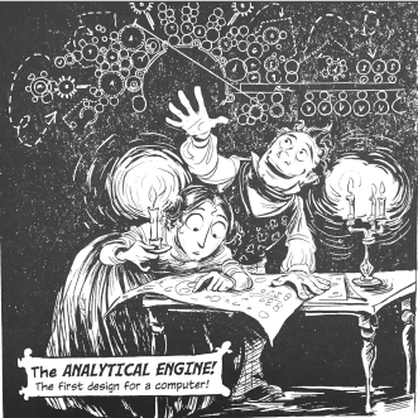|
Technological and scientific advancements powered the Industrial Revolution, and the cultivation of the imagination and the arts fueled the Romantic era. Ada Lovelace, the world’s first computer programmer, elegantly exchanged and intertwined ideas between these seemingly opposing movements as she explored computer programming. Her work inevitably stirred encounters between her desire to explore technology and the social expectations of a 19th century English woman. Lovelace’s ingenious pioneering work remains a powerful model for women in the STEM sphere and people at the intersection of the arts and sciences.
Student analysis is in gold font. |
"Too many of the breakthrough contributions of women in science, technology, engineering, and math (STEM) fields continue to go untold, too often fading into obscurity. Let's write them back into history." -Smith and Handelsman, The White House, 2014 [1]
